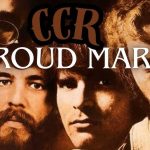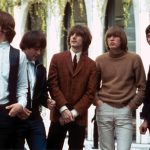Rod Stewart: Through the Years – A Rock and Roll Chameleon

Rod Stewart, born Roderick David Stewart on January 10, 1945, in Highgate, London, is undeniably one of the most distinctive and enduring voices in rock and roll history. His career spans over six decades, marked by an astonishing ability to reinvent himself, cross genres, and maintain a powerful presence on charts and stages worldwide. “Through the Years” perfectly encapsulates his journey from a raw, blues-infused rocker to a polished pop superstar and, ultimately, a revered interpreter of classic standards.

The Early Years: From Mod to Blues-Rock Grunt (1960s) Stewart’s musical journey began in the burgeoning mod and blues scene of early 1960s London. He honed his craft in various bands, most notably as a vocalist for the Jeff Beck Group and later as a frontman for the gritty, influential rock band Faces. It was during this period that his unique, raspy vocal style – a blend of blues, folk, and soul – truly emerged. His charismatic stage presence and signature spiky hair were already becoming trademarks. Faces gave him a platform to develop his songwriting and stage antics, laying the groundwork for his solo superstardom.

Solo Stardom and the “Golden Era” (1970s) The 1970s marked Rod Stewart’s explosive rise as a solo artist. Albums like Every Picture Tells a Story (1971), featuring the timeless hit “Maggie May,” solidified his reputation. He masterfully blended folk, rock, and blues, often with a raw, confessional lyrical style. Hits like “You Wear It Well,” “Sailing,” and “Tonight’s the Night (Gonna Be Alright)” showcased his versatility, from heartfelt ballads to foot-stomping rock anthems. He became a global sex symbol, known for his flamboyant outfits and an undeniable swagger that captivated millions. His live shows were legendary for their energy and audience interaction.

Pop Reinvention and Global Domination (Late 1970s – 1980s) As the decade progressed, Stewart subtly shifted his sound, incorporating disco and pop elements. This evolution was epitomized by the massive success of “Da Ya Think I’m Sexy?” (1978), which, while divisive among some rock purists, brought him even wider commercial appeal. The 1980s saw him continue to adapt, embracing synth-pop sounds with hits like “Young Turks,” “Forever Young,” and “Rhythm of My Heart.” He proved he could navigate changing musical landscapes while maintaining his distinct vocal identity. His passion for football (soccer) also became a well-known part of his public persona during this period.

The Great American Songbook and Enduring Icon (2000s – Present) In a bold and highly successful move in the early 2000s, Rod Stewart embarked on a series of albums interpreting standards from The Great American Songbook. This surprising pivot introduced him to a new generation of fans and reignited his career, demonstrating his impeccable vocal control and interpretive skills in a more mature setting. These albums sold millions, proving his enduring appeal across diverse musical tastes. He has continued to tour extensively, delivering his classic hits with the same energy and charm that defined his early career.
Legacy and Influence Rod Stewart’s journey “through the years” is a masterclass in longevity and artistic evolution. With over 250 million records sold worldwide, numerous awards (including a Grammy and inductions into the Rock and Roll Hall of Fame both as a solo artist and with Faces), he has left an indelible mark on music. His unique voice, charismatic stage presence, and ability to traverse genres have inspired countless artists. He is a true rock and roll chameleon, a working-class hero who became a global superstar, and his music continues to resonate with fans of all ages, proving that some voices truly are timeless.











